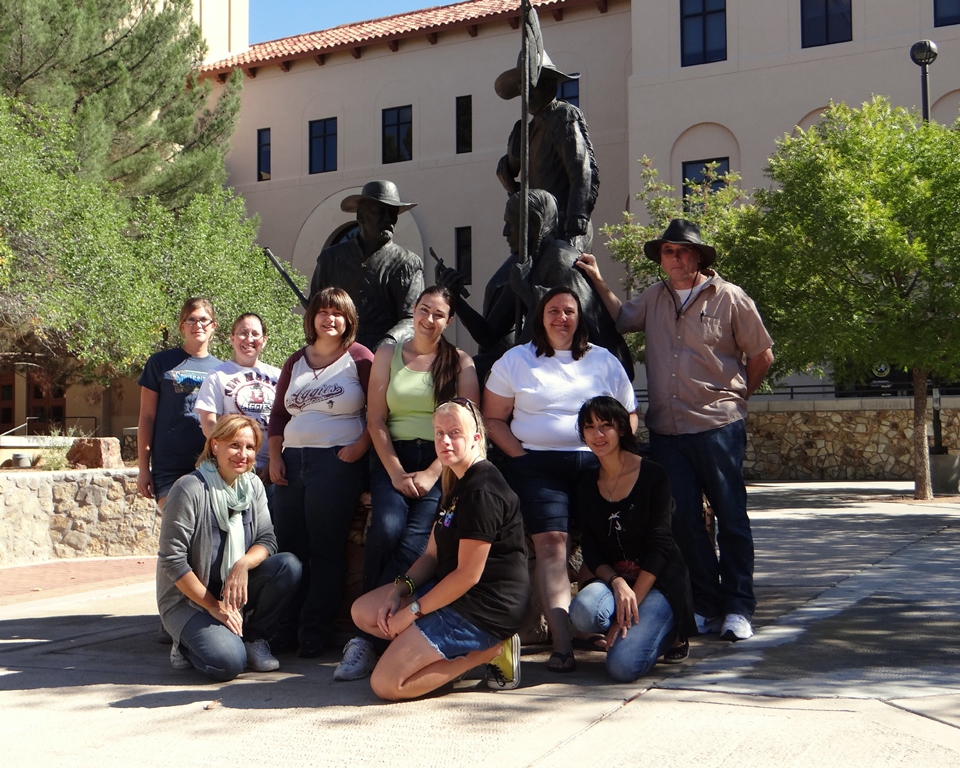NMSU museum conservation students restore retablos, on display in December

You probably know that there are art works housed in museums all over the world. What you might not know is that through the efforts of conservators, these works of art have been maintained for centuries, and that New Mexico State University offers a program through which students receive training to become licensed museum conservators.
The undergraduate Museum Conservation Program in NMSU's College of Arts in Sciences, has been offered for more than 10 years and is one of only three in the nation.
"Conservation is the study of preservation of art or historical objects, anything that humans give value to," said Silvia Marinas-Feliner, program director. "We learn how to better preserve objects and slow down the deterioration process in the safest way possible. There is a huge problem in museums all over the nation. Collections are not well-kept because museums do not have enough staff that have the knowledge of how to preserve the objects."
Some of the projects recently undertaken by students in the program have included the restoration of "The Traders" sculpture outside the Business Complex on the NMSU campus, and the Bataan Memorial bronze sculpture "Heroes of Bataan" in Las Cruces and restoring the collection of the 19th century Mexican retablos owned by NMSU.
Under Marinas-Feliner's supervision, a group of 12 students went through the process of restoring the artworks.
"Conserving Tradition: The NMSU Retablo Collection Exhibition" will be on display through Dec. 21 at the University Art Gallery.
There will be a public reception featuring a talk with Marinas-Feliner and her students from 6 to 8 p.m. Wednesday, Dec. 4.
The retablos were obtained by NMSU in the late 1960s through the early 1970s from independent collectors. Most were made in the 19th century in Central Mexico, though there are some from the late 18th century. Several have circulated in international exhibits organized by Marinas-Feliner.
Damages to the retablos included corrosion, surface scratches and melting (probably from being near candles), said graduate art student Whitney Jacobs.
Restoring the retablos was a multi-step process that involved analyzing works, identifying the problems, conducting testing, determining a treatment and finally, applying the treatment.
"First Dr. Marinas-Feliner taught us to assess the overall damage," explained student Maria Marin. "We do different types of testing and sometimes we find other problems and solutions. From there, we take a course of treatment, and in the case of the retablos, treat both sides.
"We want to see what kinds of solvents we can use to remove that type of rust and stabilize the surface. We start out gently, dry brushing with a cotton swab, then we move onto something like water. The use of solvents escalates, depending on how aggressive the treatment needs to be. Once we pick the right one, we continue with the treatment until the retablo is clean."
Solvents frequently used include mineral spirits, acetone and alcohol, among others.
"We work on a variety of materials," said Jacobs, who in addition to the retablos, restored a wooden crucifix sculpture. "Every object is different, with a vastly different history. All the materials have to be approached in a different way. Nowadays, people are using lots of mixed media, and that poses challenges for conservators."
She suggested artists include a descriptive note of the materials used in an artwork if they wish to preserve it for a long period.
Marinas-Feliner, originally from Spain, helped launch the NMSU program in 2002. She received a second master's degree from NMSU in archeology.
"My idea was to combine both areas," she said. "I wanted to restore all kinds of materials in really bad condition. When I first came here, I tried to do that, and that's what I want to pass on to my students. I really hope that my students will go to small museums and help better preserve their art collections.
"At this stage, what they get here is preparation in order to get to the graduate level. They can work as conservator technicians but not as conservators until they get to the graduate level."
The retablos exhibit features before-restoration photos of the retablos, a table with some of the tools used in the restoration process and wall texts explaining the process.
"I'm very happy this exhibit is up," Marinas-Feliner said. "It's the first time we've had the opportunity to show what the program is about. A lot of people have no idea what conservation work entails, so this will be a great opportunity to show the public. The retablos are the first real objects the students worked on and they did an incredible job. I'm very proud of them."
"We're thrilled to be highlighting these NMSU treasures," said Stephanie Taylor, interim director of the University Art Gallery.


